First Look At Houthi Kamikaze Drone Boat That Struck Cargo Ship In Red Sea
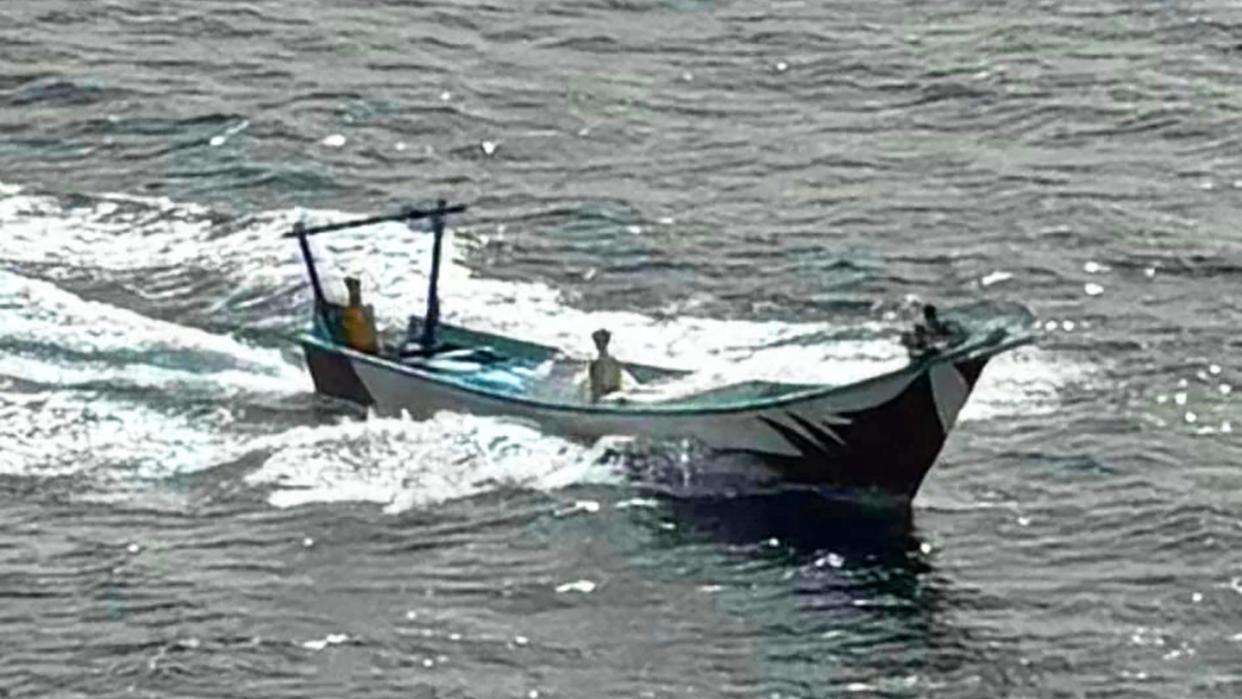
Video has emerged on social media offering the first view of the Houthi uncrewed surface vessel (USV) that struck the M/V Tutor in the Red Sea last week. It also shows the Liberian-flagged, Greek-owned bulk cargo carrier security crew’s perplexed reaction as the USV approached. Though the Iranian-backed rebel group has constantly attempted USV attacks after launching their assault on shipping in November in the wake of the Israel-Hamas war, this incident marked the first time they actually struck a ship during this current campaign.
The Houthi USV had what appear to be dummies onboard, with no obvious signs of an antenna, though it is hard to tell from the distance it is seen and the resolution of the video.
Those drone boats are often made to look like fishing vessels common in the Red Sea region and are typically fashioned out of fiberglass or wood, the Ambrey maritime security firm reported in its assessment of this incident. In January, one washed up in the Bab al Mandeb Strait.
“Inspectors found three electronic switches connected to 25kg (about 55 pounds) of C4 explosives - approximately 33.5kg (about 74 pounds) of TNT equivalent, and 50kg (about 110 pounds) of TNT,” Ambrey reported. “The switches seen have been pressure contact switches and, in the past systems, these have been facing forward-, starboard- and port-facing.”
You can see how the Houthis have developed their USVs in this chart below.
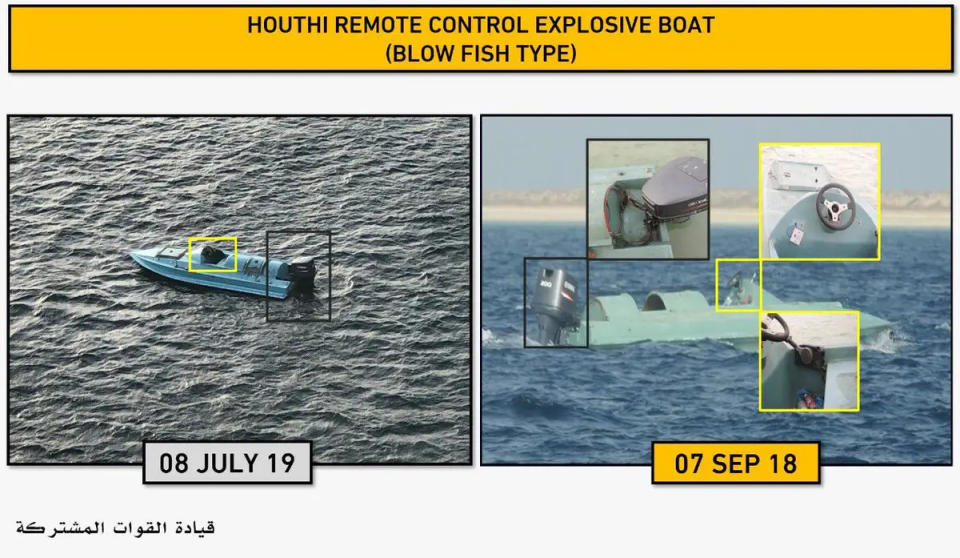
The use of dummies in the June 12 attack “was significant,” according to Ambrey, as it increases the threshold for use of force as doing so would, at least to the defender, be deadly, as opposed to just disabling or destroying a small boat. It has been proven time and again that the threshold for kinetic actions is far lower against uncrewed vehicles as opposed to crewed ones for these reasons.
“This modus operandi has been seen before,” their assessment explained. “This can disguise the nature of the threat and can draw defensive fire toward the ‘operator.’”
Ambrey noted that in previous attempts by the Houthis to attack shipping with USVs, a second skiff was observed within two nautical miles guiding the drone boats to its target. That was not the case in this attack.
“From this second skiff, the operators have radio-controlled the unmanned devices,” Ambrey noted. “At the time of writing, no second skiff had been reported. The Houthis have the proven capability to track these modified vessels using GPS and to utilize a video feed. It is assessed as possible that this was controlled remotely from land.”

The video also shows security personnel taking no action against the USV.
One is seen looking at it through binoculars while two guards hold their Hecker and Koch G3 rifles pointing inexplicably straight up instead of at the USV. The three watch as it steadily approaches for about 30 seconds. The video cuts away before the USV impacts. The video does not show the impact but instead cuts to the security personnel racing to the bridge and the panicked crew inside trying to figure out what to do next.
While it is possible the semi-automatic rifles’ 7.62x51mm NATO rounds might have been able to detonate the USV or stop its engines before it hit the Tutor or damaged its guidance systems, there is no way of knowing.
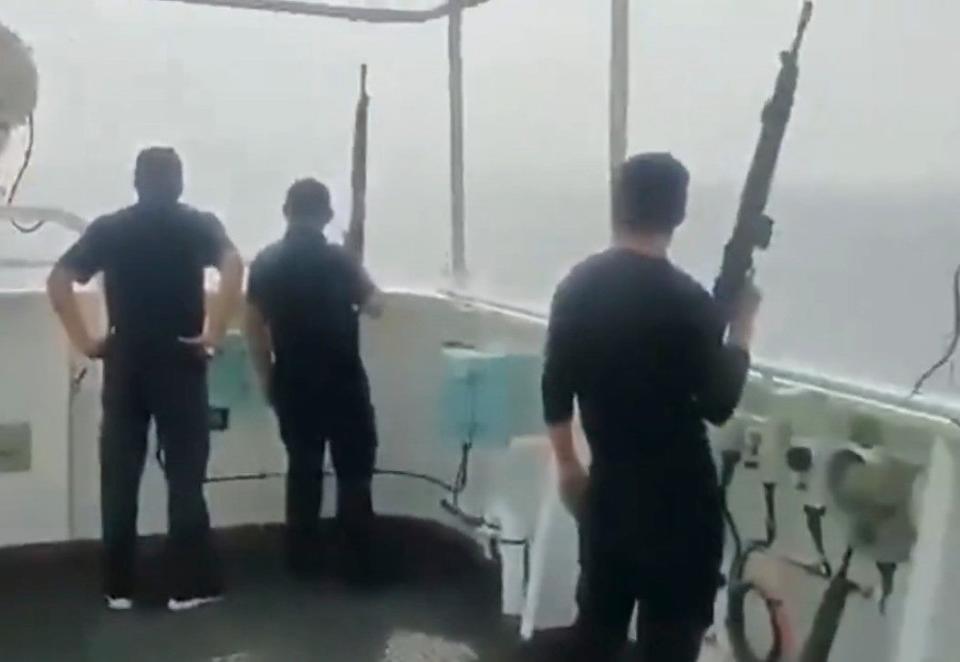
Joshua Hutchinson, Ambrey's Managing Director of Risk and Intelligence, declined to comment on the security team’s reaction because they were from another company.
The attack caused severe flooding and damaged the engine room. One civilian mariner remains missing.
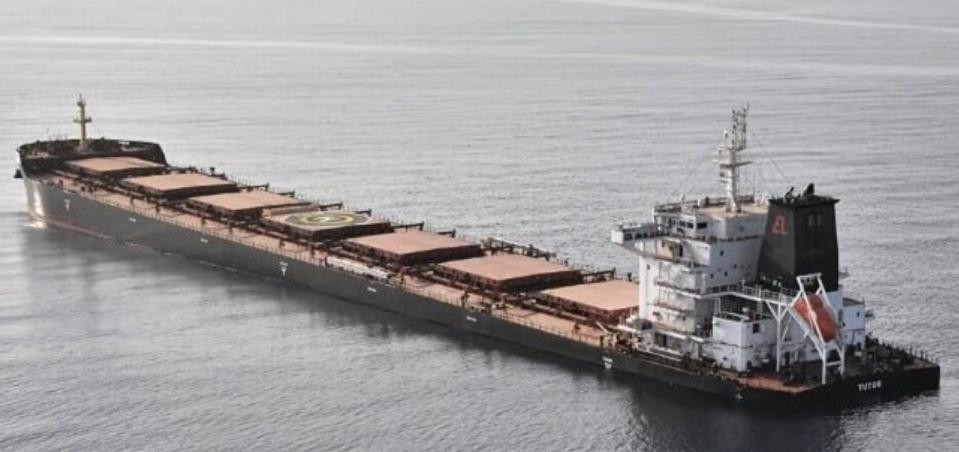
After the crew was adrift on the damaged ship for three days, sailors assigned to the Dwight D. Eisenhower Carrier Strike Group (IKECSG) rescued them on June 15, according to Naval Forces Central Command (NAVCENT).
“A helicopter from Helicopter Maritime Strike Squadron (HSM) 74 airlifted 24 civilian mariners from Tutor to Ticonderoga class guided-missile cruiser USS Philippine Sea (CG 58),” NAVCENT stated in a media release. “From there, helicopters from Helicopter Sea Combat Squadron (HSC) 7 transported the group to USS Dwight D. Eisenhower (CVN 69). After being medically checked on IKE, the mariners were flown ashore for follow-on care.
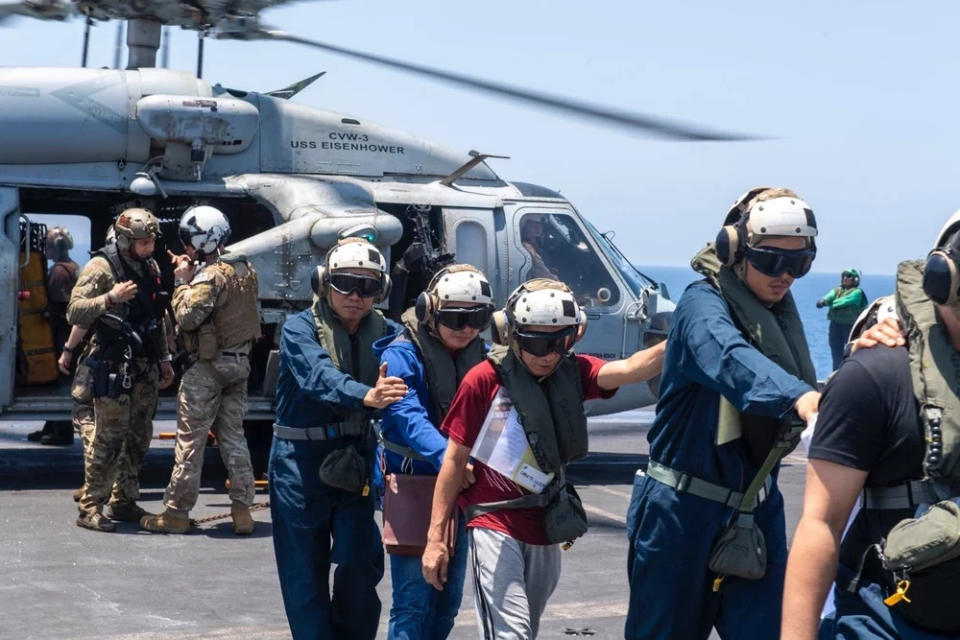
As we have previously reported, the Yemeni militant group has used kamikaze drone boats before — they actually pioneered the operational use of kamikaze USVs years ago. We first reported about this capability in January 2017, when an explosive-laden Houthi USV struck a Saudi frigate. Iran developed various crude kamikaze USVs years ago and those weapons soon migrated to their Houthi proxies, which used them first operationally. You can see the January 2017 attack in the video below.
The Houthis began launching USVs at Red Sea shipping in its current campaign back in January. At the time, the deputy CENTCOM commander said the USV was destroyed.
Despite repeated efforts by the U.S. and allies to go after Houthi drones, missiles and USVs after they are launched and the facilities they launch from, they have been ramping up their shipping attacks. A day after the Tutor was hit, they struck M/V Verbena, a Palauan-flagged, Ukrainian-owned, Polish-operated bulk cargo carrier in two separate missile attacks, CENTCOM stated.
The crew “issued a distress call indicating they were abandoning the ship. M/V Anna Meta responded to render assistance.”
Anna Meta recovered the mariners and transported them to safety, according to CENTCOM.
“The crew abandoned ship due to continued fires and an inability to control them. The Iranian frigate IRIN Jamaran was eight nautical miles from M/V Verbena and did not respond to the distress call.
The drone boats the Houthis are launching are less expensive and capable than those the Ukrainians have been using to attack Russian warships as well as the Kerch Bridge.
Still, there is no apparent end in sight for the Houthi attacks, which are giving the U.S. Navy its biggest challenge in decades. But now that there are clear images circulating showing the latest iteration of their USVs and how the Tutor crew reacted, other ship crews could potentially avoid the same fate in the future.
Contact the author: howard@thewarzone.com

